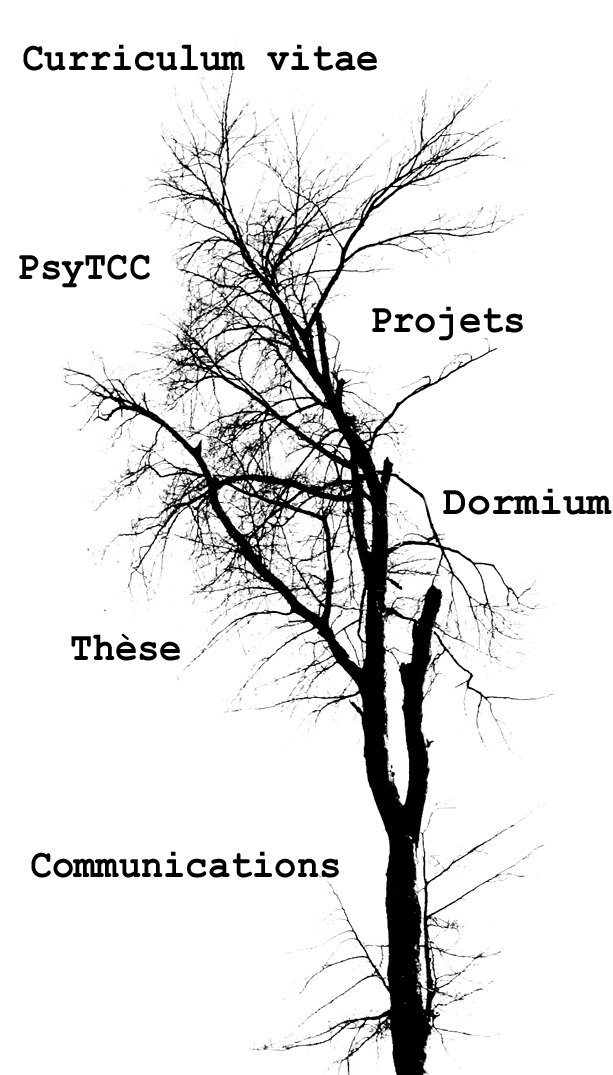
Titre : Traitement des relations spatiales visuelles et effet de pratique. Approche dynamique des capacités cognitives.
Résumé : Le cadre théorique de ce travail se situe dans la conception computo-fonctionnelle de la vision de haut niveau de Kosslyn et Koenig (1995). Leur modèle repose essentiellement sur la dissociation entre la reconnaissance de l’objet et le traitement spatial de la scène visuel. En 1989, Kosslyn postule l’existence de deux sous-systèmes fonctionnels pour le traitement des relations spatiales. Le premier mécanisme opère un traitement catégoriel, c'est-à-dire calcule les positions relatives des objets. Le second mécanisme opère un traitement coordonné, c'est-à-dire calcule la distance entre les objets. L’utilisation du paradigme de présentation en champ visuel divisé a permis de montrer une asymétrie fonctionnelle de ces deux types de processus : l’hémisphère gauche sous-tendrait préférentiellement un traitement catégoriel ; l’hémisphère droit sous-tendrait préférentiellement un traitement coordonné. Cette différence inter-hémisphèrique fait preuve d’une dichotomie des deux types de traitement. Cependant, plusieurs études ont observé un effet de pratique au cours de leur expérimentation : une diminution de l’intervention de l’hémisphère droit au profit d’une prise en charge progressive de l’hémisphère gauche.
L’objectif théorique de cette thèse repose sur deux questions : (1) Existe-t-il un ou plusieurs sous-systèmes fonctionnels chargés du traitement des relations spatiales ? (2) Comment interpréter l’effet de pratique en terme de prise en charge de l’information par les hémisphères cérébraux ? (3) Les spécialisations hémisphériques sont-elles relatives ou absolues ?
L’objectif méthodologique de cette thèse est la recherche de nouveaux paradigmes expérimentaux pour l’exploration des phénomènes d’apprentissage. Dans cette perspective, nous comptons optimiser les paradigmes classiques d’une part en prenant en considération les communications hémisphériques et la charge de travail cognitif, d’autre part en validant nos interprétations par des simulations de perceptrons multi-couche.
Mot-clés : Relations spatiales, paradigme de présentation en champ visuel divisé, effet d’apprentissage, corps calleux, réseaux connexionnistes.
Subject of the Ph.D thesis
Study of spatial relations encoding and practice effect. A new approach to cognitive processes.
Abstract
The Theoretical framework is the computational-functional conception of high-level processing of vision in Kosslyn & Koenig (1995). More particularly, this model relies a dissociation between object recognition and spatial processing of the visual field. In 1989, Kosslyn postulated that at least two different processing subsystems were used in spatial-relations processing. The first processing subsystem computes categorical relation (i.e. a measurement of the relative position of objects or parts of objects in relation to one another). The second processing subsystem computes coordinate processing (i.e. a measurement of the distance between objects relative to each other). Visual hemifield experiments showed a functional asymmetry of these two kinds of spatial-relation representations: with the left hemisphere underlies preferentially the categorical mechanism and; the right hemisphere underlies preferentially the coordinate mechanism. This hemispheric difference is interpreted as an evidence of a dichotomy between these two kinds of spatial-relation representations. However, some researchers observed a practice effect during the coordinate task in the form of a decrease in right hemisphere’s activation compensated by an increase in left hemisphere’s activation.
The theoretical aim of the thesis is based on three questions: (1) Are there one or several processing subsystems encoding visual spatial relations? (2) How can we interpret the practice effect, in relation to information processing by each hemisphere? (3) Are hemispheric specializations absolute or relative?
The methodological aim of the thesis is the application of new experimental paradigms to the exploration of the training effect. Accordingly, we aim to develop a more ?mechanical? approach to cognitive functions and their neurobiological substrates. The concept of time processing and workload will be considered and discussed leading to the develoment of the notion of cognitive efficiency. We hypothesize that observations of the processing power (in term of physical mechanics) and saturation levels of cognitive processes will give us a better and more valid estimate of the real capacity of cognitive mechanisms.
Keywords
Spatial relations, fMRI, cognitive sciences, divided visual field paradigm, workload, processing power, saturation level, capacity of cognitive mechanisms.
« Patience et longueur de temps font plus que force ni que rage. » Jean de la Fontaine (Fables, II)
The page is made
by Putois Benjamin